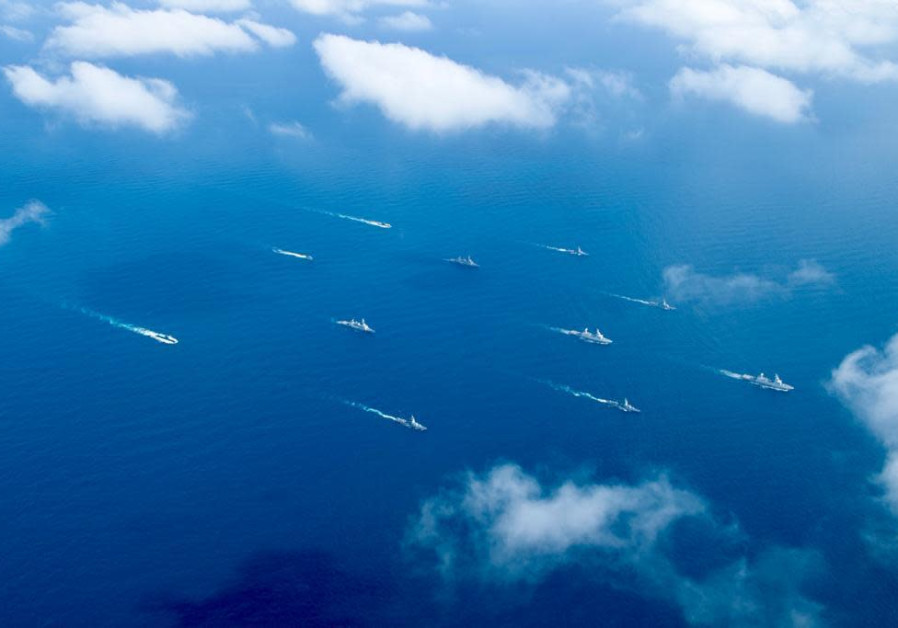The second of four Sa’ar 6 missile corvettes, INS Oz, docked at Haifa port on Wednesday, a month after it was handed over to the Israel Navy.
INS Oz will join INS Magen that arrived in December, and together they will guard the offshore gas production facilities and Israel’s territorial waters.
The ship’s arrival is “a significant milestone in the strengthening of Israel’s power, including in the exclusive economic zone,” the IDF said. “The ship will be a key part of Israel’s defense of its territorial waters and its offshore energy resources.”

Built by Thyssenkrupp Marine Systems in Kiel, Germany, INS Oz is the second of four Sa’ar 6 ships to come to Israel following INS Magen, and will become operational within two years. The two others are INS Atzma’ut and INS Nitzahon, with the last expected to arrive by the end of 2021.
At the ceremony in Haifa, Defense Minister Benny Gantz said the new ship was a “depiction of the power that we are prepared to employ across all fronts, including Lebanon and beyond, in preventing attempts by our enemies to equip themselves with weaponry that would undermine regional stability.”
Also in attendance was the commander of the Navy, Vice-Admiral Eli Sharvit, who said that the commanders and fighters of the ship have taken part in “another milestone” in building Israel’s maritime defense wall.
“The ships joining the ranks of the navy are as imperative as air is to breathing, as the security picture is incessantly changing and new threats are raising their heads,” he said. “There is no doubt that INS Oz, like its sister ships, is a technological wonder, but just as it is a sign of advancement, it is also a sign of extensive cooperation and cross-border human power.”
The 90-meter 2,000-ton corvettes have a maximum speed of 24 knots and a range of 2,500 nautical miles. Though not much longer than the Sa’ar 5 class, they have been built to better handle rough seas and stay out of port for longer.
The new class will be covered by almost 300 static radar arrays that will be able to detect incoming aerial threats. Incoming rockets can be shot down by either two naval Iron Dome interceptors, and two Barak-8 batteries can shoot down hostile cruise and ballistic missiles.
In addition to interception missile defense systems, the ships will also carry 16 anti-ship missiles, one 76mm Oto Melara super-rapid main gun, two Typhoon 25mm remote weapon stations, and two 324mm torpedo launchers for MK54 lightweight torpedoes.
Each Sa’ar 6 ship will also be outfitted with cyber and electronic warfare systems and Elta’s EL/M-2248 MF-STAR active electronically scanned array (AESA) radar, capable of tracking both air and surface targets.
Most of these weapons and radar systems are to be installed in Israel.
Should war break out, at least two Sa’ar 6 ships will be deployed to protect Israel’s Exclusive Economic Zone and its gas rigs, while the rest of the fleet would assist ground forces by attacking enemy troops and threats that could target both the home front and the gas assets, while simultaneously destroying any aerial threats launched at maritime assets and naval vessels.